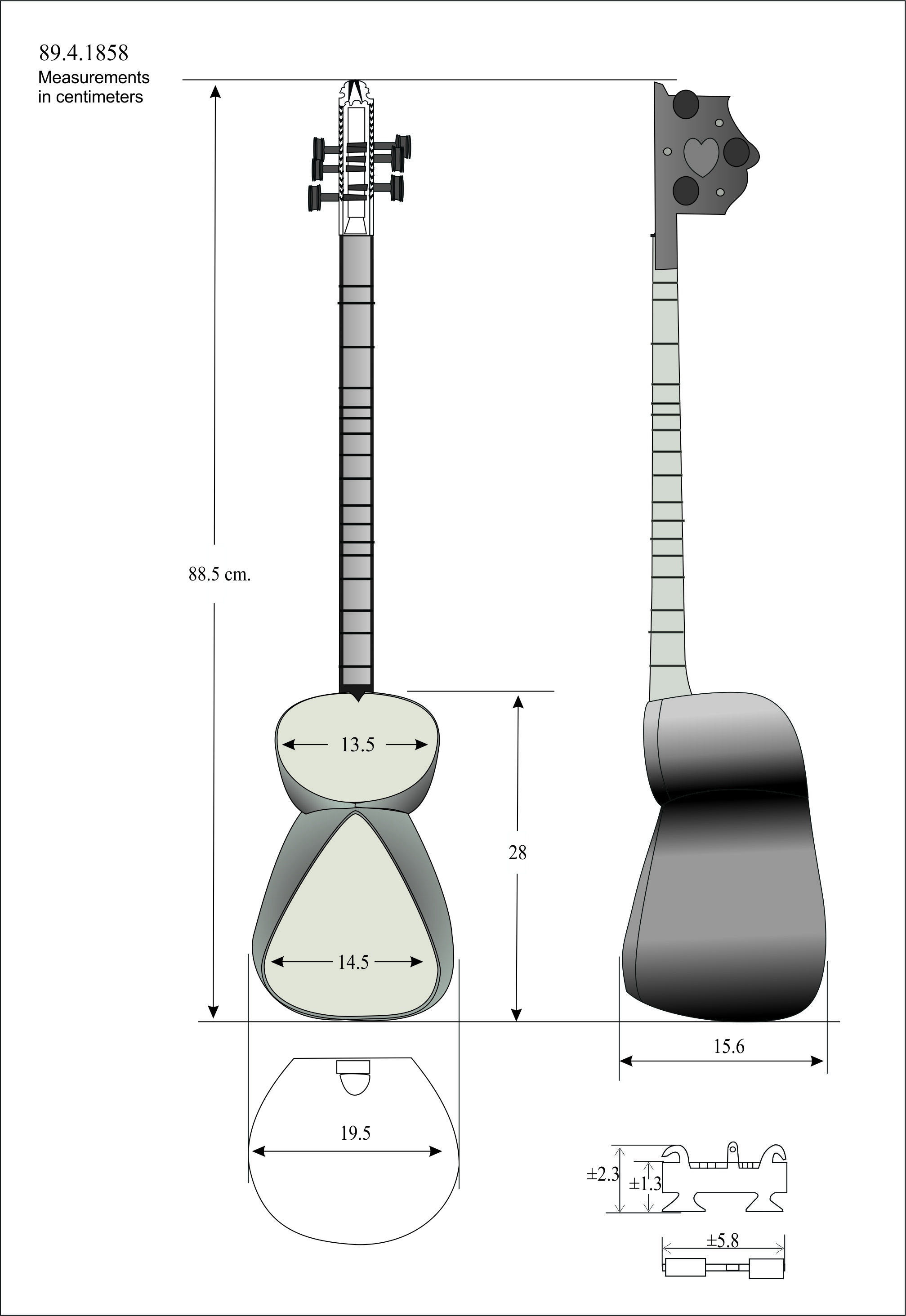Tār
The tār first appeared around Shiraz and was quickly adopted in Afghanistan and Caucasia where it was modified. The bodies upper section of these tārs are oval in shape differing from the heart-shaped Iranian style. The skin belly is very responsive to the player’s touch and thus demands a high degree of virtuosity when plucked with a brass plectrum. This instrument has six strings.
In addition to lutes like the ūd, with large, vaulted backs, wood bellies, and relatively short, unfretted necks, the Middle East possesses a large number of long necked lutes. These may be identified by carved or carvel-built (strips of wood glued together) tear-shaped bodies, fretted necks, wooden bellies, and pegblocks which extend from the lute's neck (sāz, tanbūr types), or by bodies that incorporate a waist, bipartite, parchment-covered bellies and openwork pegboxes (tār type). Linguistic connections may be made between these instrument names and those from other cultures; for example, tanbūr and tambūrā (India); tār and sitar (India), among others.
Due to rights restrictions, this image cannot be enlarged, viewed at full screen, or downloaded.
This artwork is meant to be viewed from right to left. Scroll left to view more.


.jpg)

